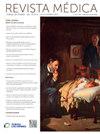与LGI1抗体相关的自身免疫性脑炎:临床、诊断和治疗方面的回顾
IF 0.4
Q4 MEDICINE, GENERAL & INTERNAL
引用次数: 0
摘要
与抗lgi1抗体相关的自身免疫性脑炎是免疫介导的边缘脑炎最常见的形式之一。这种情况通常表现为亚急性局灶性发作、行为障碍和记忆障碍,常伴有面臂肌张力障碍发作。与其他类型的自身免疫性脑炎不同,其与肿瘤的关联并不常见;然而,由于及时治疗预后良好,早期识别是必不可少的。诊断依赖于特征性临床特征、支持性神经影像学发现、脑脊液异常以及血清或脑脊液中抗lgi1抗体的检测。一线治疗包括皮质类固醇、静脉注射免疫球蛋白或血浆置换的免疫治疗。在难治性病例中,利妥昔单抗显示出积极的临床结果和较低的复发率。本文总结了该病的流行病学、病理生理、临床、诊断和治疗方面的情况,强调了早期临床怀疑的重要性。此外,它还强调了一些具有高度提示性临床表现的病例,其中抗体滴度可能很低或无法检测到,这强调了临床判断在诊断过程中的关键作用。本文章由计算机程序翻译,如有差异,请以英文原文为准。
Encefalitis autoinmune asociada a anticuerpos anti-LGI1: revisión de sus aspectos clínicos, diagnósticos y terapéuticos
Autoimmune encephalitis associated with anti-LGI1 antibodies is one of the most recognized forms of immune-mediated limbic encephalitis. This condition typically presents with a subacute course of focal seizures, behavioral disturbances, and memory impairment, often accompanied by faciobrachial dystonic seizures. Unlike other types of autoimmune encephalitis, its association with neoplasms is uncommon; however, early recognition is essential due to its favorable prognosis when promptly treated. Diagnosis relies on characteristic clinical features, supportive neuroimaging findings, cerebrospinal fluid abnormalities, and detection of anti-LGI1 antibodies in serum or cerebrospinal fluid. First-line treatment includes immunotherapy with corticosteroids, intravenous immunoglobulin, or plasma exchange. In refractory cases, rituximab has demonstrated positive clinical outcomes and lower relapse rates. This article summarizes the epidemiological, pathophysiological, clinical, diagnostic, and therapeutic aspects of this entity, emphasizing the importance of early clinical suspicion. Moreover, it highlights that there are cases with highly suggestive clinical manifestations where antibody titers may be low or undetectable, underscoring the critical role of clinical judgment in the diagnostic process.
求助全文
通过发布文献求助,成功后即可免费获取论文全文。
去求助
来源期刊

Revista Medica Clinica Las Condes
MEDICINE, GENERAL & INTERNAL-
CiteScore
0.80
自引率
0.00%
发文量
65
审稿时长
81 days
 求助内容:
求助内容: 应助结果提醒方式:
应助结果提醒方式:


